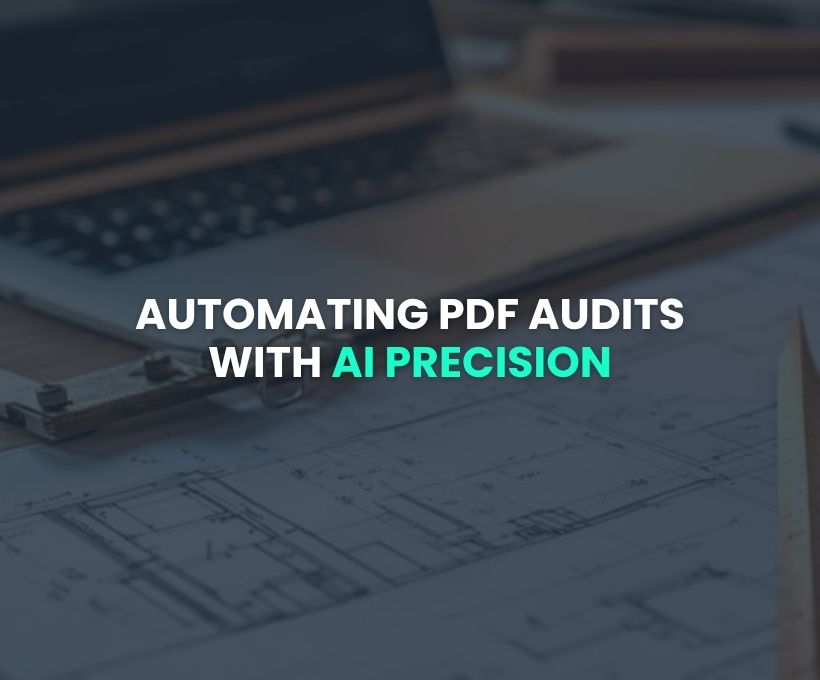In fast-paced industries like engineering and construction, time is money—but so is accuracy.
I recently completed a project that started with a simple but persistent pain point: manual PDF auditing. Engineering firms often manage thousands of technical drawings in PDF format. Each file needs to be reviewed for metadata—dates, company names, version stamps—and validated for compliance with internal or contractual rules.
The problem? That task is traditionally done by hand.
The Business Pain Point: Manual PDF Auditing
Imagine you’re part of a team responsible for approving hundreds of engineering drawings before a project moves forward. Every document must be stamped, checked, and verified—sometimes against strict formatting or naming conventions.
But with manual auditing, things fall through the cracks:
- Human reviewers overlook details
- Files get misfiled or forgotten
- Review time stretches from hours to days
- Mistakes lead to costly rework and compliance delays
For my client, this process was eating up valuable hours from technical staff, all for work that could—and should—be automated.
My Approach: AI-Powered Document Intelligence
I knew right away that this wasn’t just about parsing PDFs. It was about building trust in the review process—automating with precision and clarity.
So I built a system that automatically:
- Scans incoming PDF drawings, regardless of size or layout
- Extracts targeted information (like dates or client names) from defined zones of each document
- Validates extracted data against predefined rules set in a YAML config
- Sorts and organizes files based on audit results—flagging issues instantly
I used Python as the backbone, Poppler for PDF rendering, and OpenAI’s API for advanced interpretation when needed. The result is a robust, flexible system that delivers audit-grade accuracy—without the manual grind.
What Changed: From Hours to Minutes
This automation replaced a tedious, error-prone routine with a clean, consistent workflow:
- Review time dropped dramatically—batch auditing hundreds of PDFs in minutes
- Accuracy improved—rule-based validation eliminated human oversight
- Teams got time back—engineers focused on design, not documentation
It’s not just more efficient—it’s more reliable. Files are no longer bottlenecks; they flow through the pipeline with clarity and traceability.
Why It Matters: The Hidden Cost of Manual Work
This isn’t just about PDFs—it’s about how organizations operate.
Every firm I’ve worked with has hidden inefficiencies lurking in their workflows. Manual tasks that feel “manageable” often cost more than we realize—through delays, errors, and distraction from core work.
This project is a reminder that automation isn’t about removing people—it’s about removing friction. It’s about building systems that do the boring stuff well, so your team can do the smart stuff better.
Can This Help Your Organization?
If your team handles large volumes of structured documents—drawings, forms, compliance reports—this kind of automation could be a game-changer.
The project I built is complete, but it’s also modular. There’s room to expand it with:
- Smarter template recognition
- Improved OCR for scanned layouts
- Integration with document management systems
If you’re curious about what’s possible—or if your team is stuck doing repetitive PDF tasks—I’d love to share what I’ve learned.
Let’s talk. You might be just one automation away from a smoother operation.
